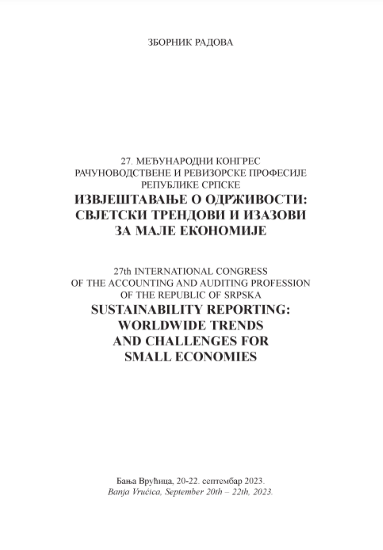ЗЕЛЕНА ТРАНЗИЦИЈА - ИЗАЗОВ ЗА СТАБИЛНОСТ И УЈЕДИЊЕНОСТ ЕВРОПСКЕ УНИЈЕ
GREEN TRANSITION - A CHALLENGE FOR STABILITY AND UNITY OF THE EUROPEAN UNION
Author(s): Zoran Malešević
Subject(s): Energy and Environmental Studies, Environmental and Energy policy, Political Ecology, Environmental interactions, EU-Accession / EU-DEvelopment, ICT Information and Communications Technologies
Published by: Savez računovođa i revizora Republike Srpske
Keywords: cohesion; stability; green transition; digitalization;
Summary/Abstract: The green transition has clearly shown that EU member states are making economic progress, but that the gap between countries and regions is increasing. Similar economic opportunities and opportunities across the region are "key to the functioning and legitimacy of the Union. Therefore, the reduction of differences and the pursuit of economic, social and territorial cohesion - as stated in the Treaty on Functioning of the European Union (Art. 174) are the guiding principles for the development of EU economic policy. Europe is going through a double transition of digitalization and decarbonization that is drastically changing the way how the economy works. The necessary adjustments vary greatly between activities and European regions that differ in their economic structures. Local assets such as internet availability, greenhouse gas intensity and the availability of highly skilled labour, as well as social structure play a key role in shaping the economic structure. The activities that a particular region is specialized for, indicate its potential to benefit from digital and green transitions. Regions specialized in product desigp or using digital and green solutions -will greatly benefit from both of these transitions. Regions with a strong reliance on agricultural activities must adapt in a different way than regions whose economies are dominated by services that require specific knowledge or highly technologically intensive manufacturing industries.. The structural changes resulting from the green transition could turn the European economic landscape upside down and thus reshape economic cohesion in the EU. Also, regions that are prosperous today may lose ground in the future., 'while less developed regions may take advantage of previously unused potential and grow beyond expectations during this double transition. As a result, existing disparities may intensify, disappear or be supplemented by new ones. In any case, new challenges arise for the stability and unity of the European Union.
- Page Range: 409-422
- Page Count: 14
- Publication Year: 2023
- Language: Serbian
- Content File-PDF

